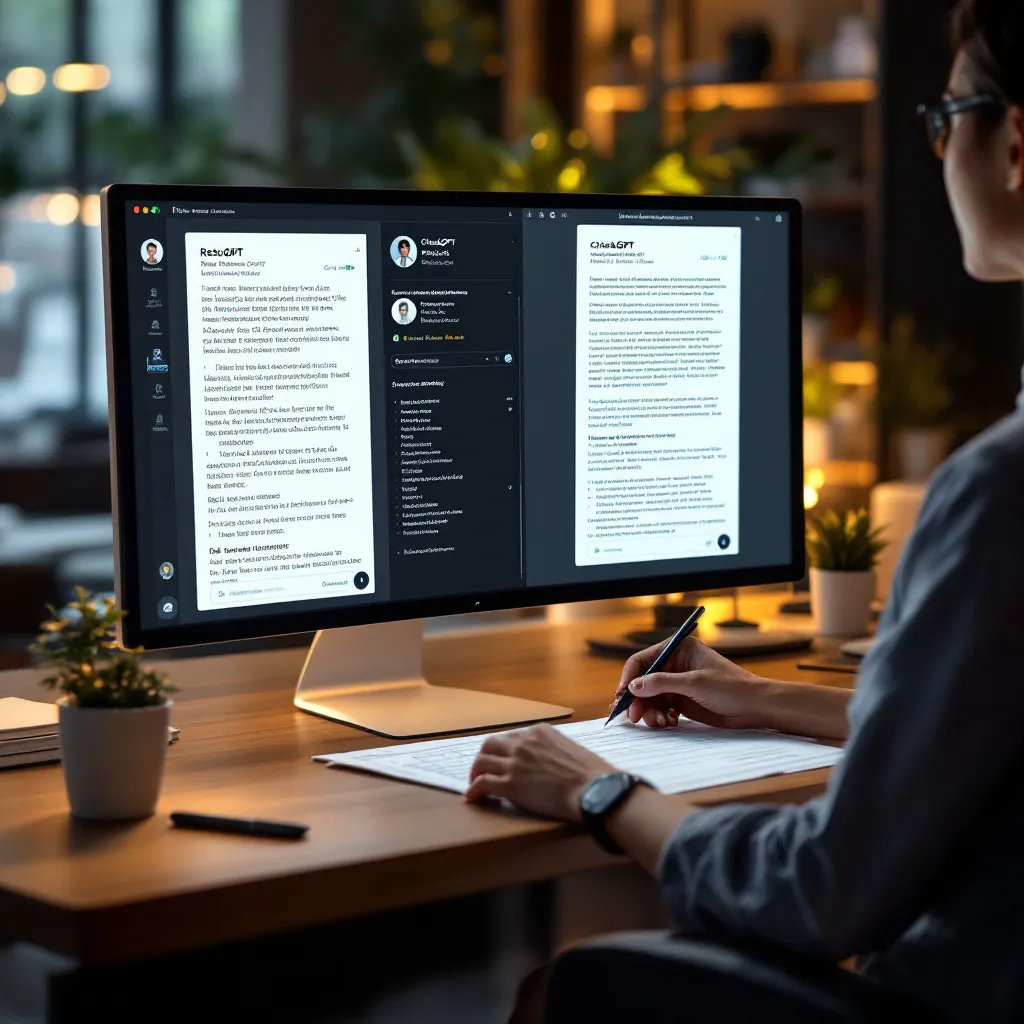In today’s competitive job market, getting your resume past Applicant Tracking Systems (ATS) is crucial before a human ever sees your application. With ChatGPT, you have a powerful tool to help optimize your resume for these digital gatekeepers. This guide will show you exactly how to leverage ChatGPT to create an effective, ATS-friendly resume while maintaining authenticity and professionalism.
Understanding How ChatGPT Can Enhance Your Resume for ATS
Applicant Tracking Systems scan resumes for relevant keywords and proper formatting before determining which candidates move forward in the hiring process. According to Jobscan’s ATS Resume Guide, over 75% of applications are rejected by ATS before a human ever reviews them.
ChatGPT can help navigate this challenge by:
- Extracting relevant keywords from job descriptions that match ATS algorithms
- Reformatting your resume to avoid technical pitfalls that confuse ATS systems
- Rewriting achievements with quantifiable metrics to catch both algorithmic and human attention
- Suggesting industry-specific terminology relevant to your target position
However, ChatGPT isn’t a magic solution. It can’t create legitimate experience you don’t have, nor should it be used to fabricate qualifications. Think of it as a sophisticated writing assistant, not a replacement for your authentic professional story.
Effective Prompts to Optimize Your Resume with ChatGPT
The quality of ChatGPT’s output depends entirely on your prompts. Here are some effective prompts to get the most useful resume help:
Keyword Optimization Prompts
When tailoring your resume to specific job postings, try:
"Act as a professional resume writer. Analyze this job description [PASTE JOB DESCRIPTION] and suggest 10 ATS-friendly keywords to incorporate into my resume."
For experience section enhancement:
"Rewrite my work experience bullets using the STAR method and quantifiable metrics. Focus on [SPECIFIC SKILL] relevance to [TARGET ROLE]."
For an overall ATS review:
"Review my resume for ATS compatibility. Check for: keyword density, section headers, and readability. Provide specific revision suggestions."
These prompts help you focus ChatGPT on delivering practical, targeted advice rather than generic resume tips. The specificity helps both you and the AI stay focused on your particular needs.
Step-by-Step Guide: Using ChatGPT to Tailor Your Resume for Specific Job Postings
Follow this process to systematically enhance your resume with ChatGPT:
-
Extract job requirements
Begin by pasting the job description into ChatGPT with this prompt:
"Identify primary hard skills, certifications, and action verbs from this job description."This creates a targeted keyword list for your optimization.
-
Customize resume sections
For each major section, use this format:
"Optimize my [WORK EXPERIENCE/SKILLS] section for [TARGET ROLE] using these keywords: [LIST]. Maintain truthful context about my actual experience."This ensures ChatGPT enhances your authentic experience rather than fabricating new claims.
-
Create ATS-friendly formatting
As Indeed’s ATS Tips suggest, clean formatting is essential. Ask ChatGPT:
"Convert this resume content into plain text format without columns or tables. Preserve section hierarchy using standard headings."
This methodical approach ensures you’re addressing all aspects of ATS optimization while maintaining your resume’s integrity. For advanced tailoring, you might want to try an ai resume builder that specializes in ATS optimization.
Common Mistakes to Avoid When Using ChatGPT for Resumes
Even with powerful AI assistance, there are several pitfalls to watch for:
❌ Over-automation
Never let ChatGPT invent qualifications. According to Emory’s Resume Guide, fabricated claims are easily discovered during reference checks and can permanently damage your professional reputation.
❌ Keyword stuffing
While keywords are important, natural language flow is crucial. TopResume’s ATS Strategies recommends maintaining a 3-5% keyword density for optimal results. If your resume reads like a keyword list rather than a professional narrative, it needs refinement.
❌ Generic summaries
Avoid bland statements like “Hard-working professional seeking new opportunities.” Instead, use ChatGPT to craft role-specific value propositions such as:
“Digital Marketing Manager | 8 years driving 200%+ ROAS for SaaS brands”
This approach works well with an ai objective generator to create compelling, targeted professional summaries.
Verifying and Refining Your ChatGPT-Enhanced Resume
After optimizing with ChatGPT, take these critical verification steps:
-
Run an ATS Simulation Test
Use tools like Jobscan’s ATS Checker to analyze how well your resume matches the target job description.
-
Conduct Human Proofreading
Check for “AI voice” artifacts using Grammarly’s Tone Detector
Validate all metrics and claims against your actual performance records -
Create Targeted Versions
Save variants like “Marketing-Manager_Amazon-JD23.docx” for precise tracking of which resume version was sent where.
For a comprehensive approach, consider complementing your resume with a matching ChatGPT cover letter generator to create a consistent application package.
Maximizing Your Resume with Additional AI Tools
While ChatGPT is powerful, combining it with specialized tools can enhance your results:
- Use job description bullet points generator tools for formatting work experience
- Consider ai skills to add to resume tools to identify industry-relevant competencies
- Leverage article summarizer tools to condense complex job descriptions into manageable keyword lists
When preparing for interviews, explore ai scripts for job search to practice responses related to your newly optimized resume.
Conclusion
ChatGPT offers powerful assistance for creating ATS-friendly resumes, but the most effective approach combines AI efficiency with human authenticity. By following the steps outlined above, you can create a resume that not only passes ATS screening but also impresses hiring managers with its clarity, relevance, and impact.
Remember that while tools like auto fill resume and application ai can streamline the process, your unique professional story remains the most important element of your application.
For a truly comprehensive approach to your job search, consider trying ResuFit – an all-in-one platform that combines AI-powered resume optimization, cover letter generation, and interview preparation in a seamless workflow designed specifically to increase your interview callback rate.










